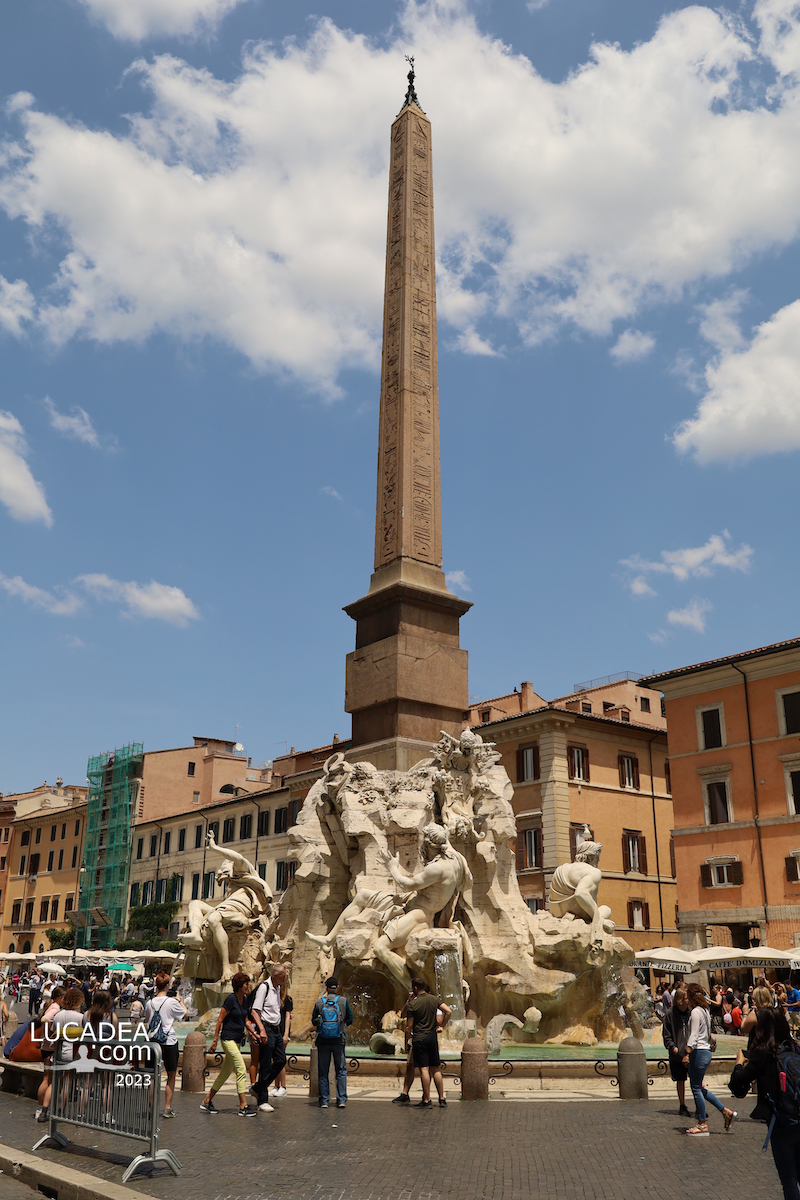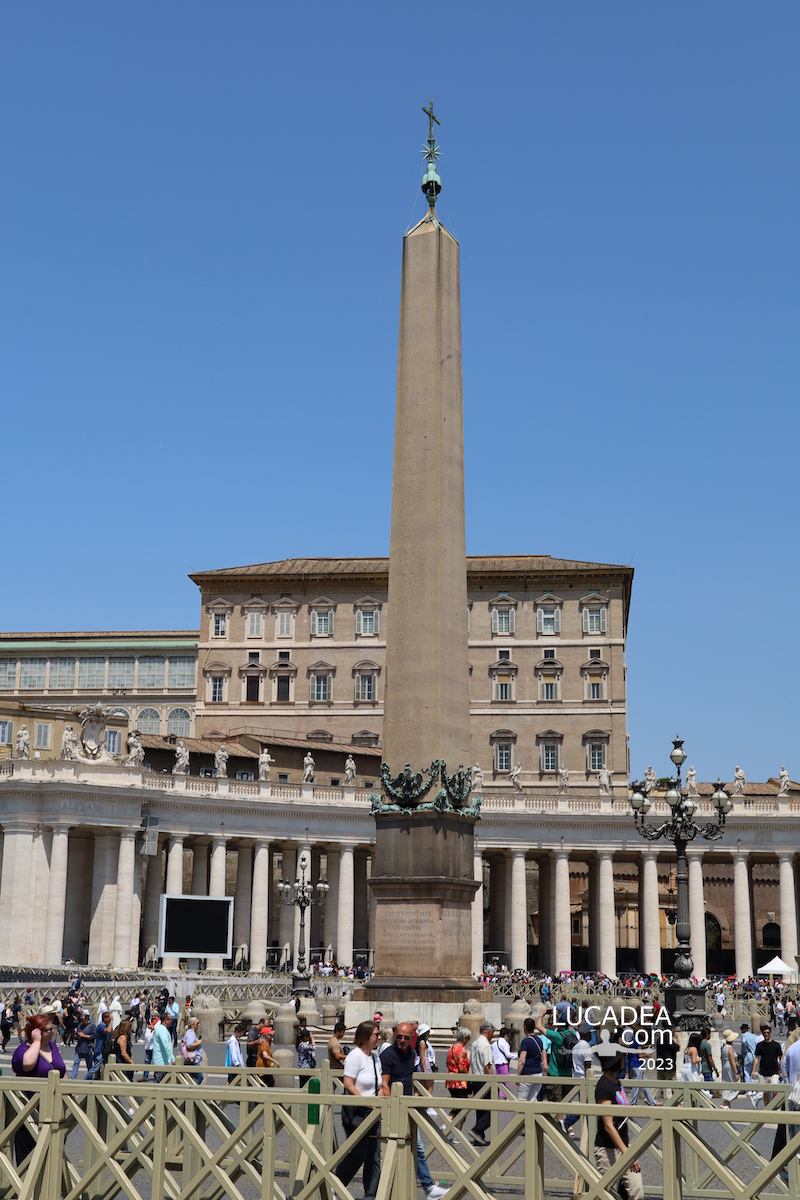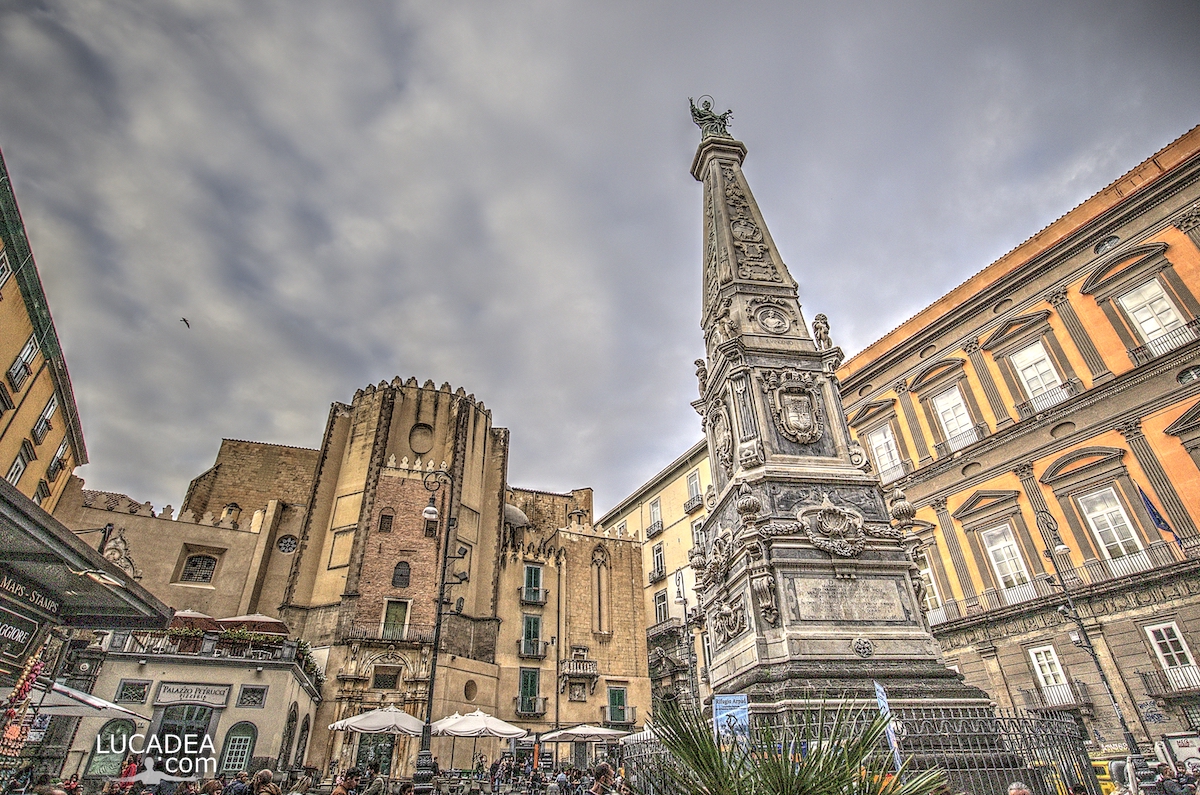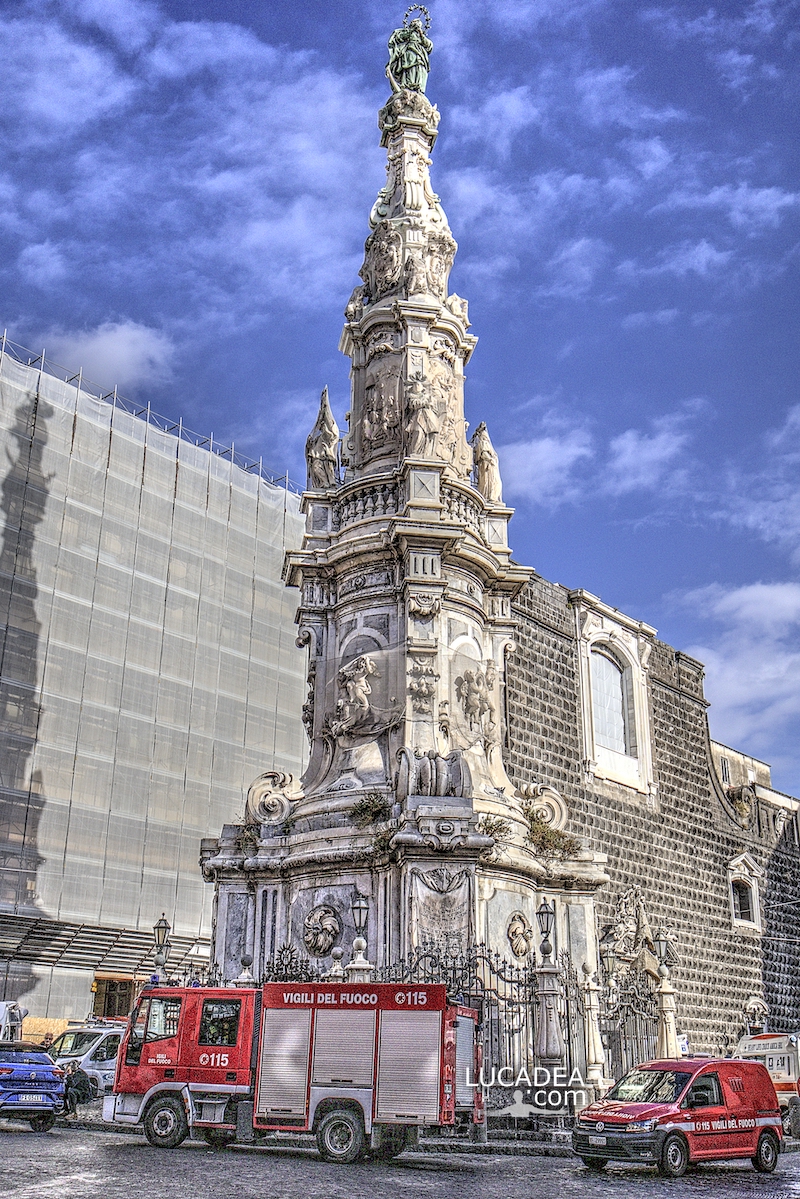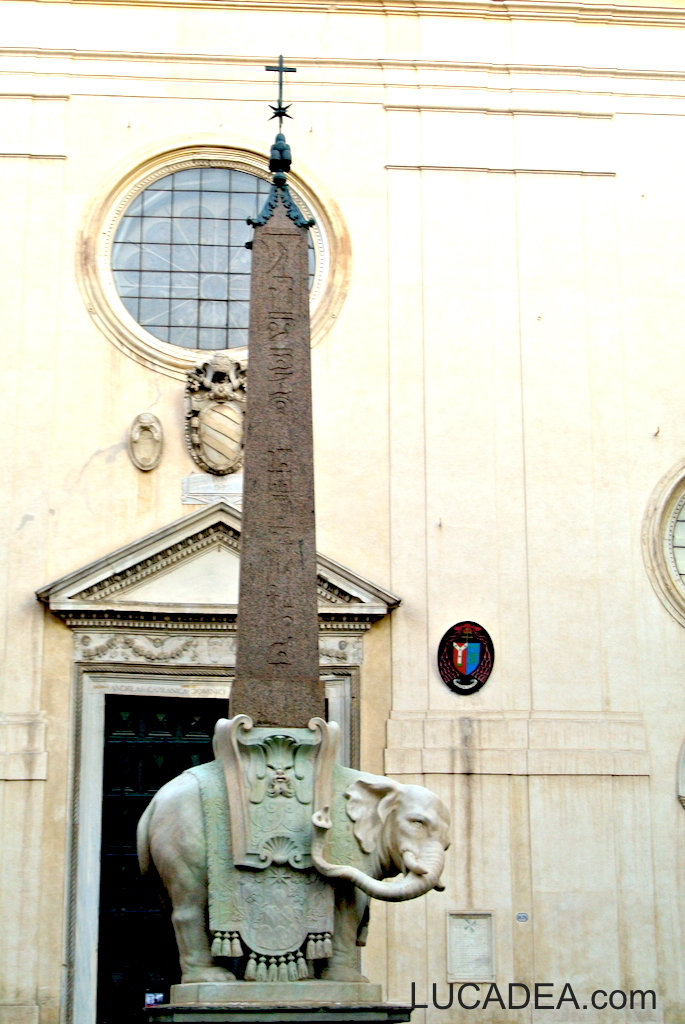The imposing Obelisk of Montecitorio in Rome.
In the heart of Rome, among the majestic streets and historic buildings, stands an imposing testimony to the glorious past of ancient Egypt: the Obelisk of Montecitorio. This ancient monument, dating back to the 6th century BC, continues to enchant visitors and residents with its beauty and fascinating history.
The obelisk, also known as the Obelisk of Psammetichus II, has passed through millennia of history before finding its current home in the Piazza di Montecitorio, in front of the Italian Chamber of Deputies. Originally erected in Heliopolis, the obelisk was transported to Rome in 10 BC at the behest of Emperor Augustus. Since then, it has witnessed a succession of emperors, popes and governments, becoming a silent witness to the changes and events that have shaped the eternal city.
Standing approximately 21.79 meters tall, the obelisk is an impressive structure made of red Egyptian granite. Its surfaces are decorated with hieroglyphic inscriptions that celebrate the pharaoh Psamtik II, emphasizing his greatness and power. These ancient symbols communicate the magnificence of ancient Egypt and its lasting influence on Roman culture and art.
Today, the Obelisk of Montecitorio continues to capture the imagination of visitors, offering them a unique opportunity to connect with the glorious past of Rome and ancient Egypt. Its presence in the Piazza di Montecitorio adds a touch of mystery and charm to the city's skyline, inviting visitors to immerse themselves in its thousand-year history.
If you are in Rome, do not miss the opportunity to admire this extraordinary treasure of antiquity. Take a stroll through the Piazza di Montecitorio and be fascinated by the magnificence of the Obelisk of Montecitorio, a tangible symbol of the indelible bond between Rome and the ancient Egyptian world.
Do you know the monuments of Rome?
Add your own comment or go to the bottom of the site to read what other visitors have written.
Photo taken with Canon EOS RP and lens Canon RF 24-50.
To see all the photos I took in Rome click here:

Here is where the obelisk is located:
The obelisk of Montecitorio, currently located in the square of the same name in the Capital, is one of the thirteen ancient obelisks of Rome. It is 30 meters high and was brought to Rome by Augustus in 10 BC. The obelisk of Monte Citorio, already present at the time of Pharaoh Psammetichus II (595-589 BC), was originally located in the city of Heliopolis in Egypt.
Continue and learn more on Wikipedia
The imposing Obelisk of Montecitorio in Rome – L’imposant obélisque de Montecitorio à Rome – El imponente Obelisco de Montecitorio en Roma – O imponente Obelisco de Montecitorio em Roma – Der imposante Obelisk von Montecitorio in Rom – Obelisk hùng vĩ của Montecitorio ở Rome – 罗马雄伟的蒙特西托里奥方尖碑 – ローマのモンテチトリオの堂々としたオベリスク
The text of the post was written with the help of ChatGPT, a language model from OpenAI.




